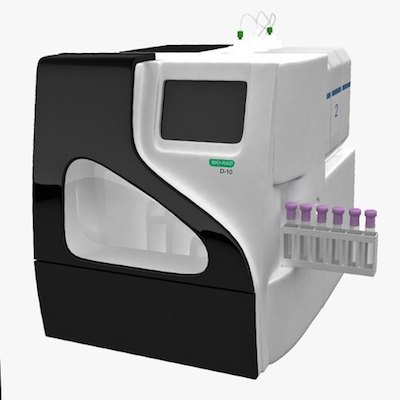Hemoglobin (Hb) A1c is a tool widely used to monitor long-term glycemic control in diabetic patients. The objective of our study is to compare the HbA1c values measured on high performance liquid chromatography (HPLC) and immunoassay in patients who were detected to have hemoglobin variant after HbA1c analysis.
Hemoglobin A1c (HbA1c) is defined by the International Federation of Clinical Chemistry working group (IFCC) as hemoglobin that is irreversibly glycated at one or both N-terminal valines of the beta chains.[1] It is formed from irreversible, slow, non-enzymatic addition of a sugar residue to the hemoglobin, and the rate of production is directly proportional to the ambient glucose concentration. The long lifespan of erythrocytes (mean 120 days) enables HbA1c to be used as an index of glycemic control over the preceding two to three months and as the adequacy of treatment in diabetic patients.


